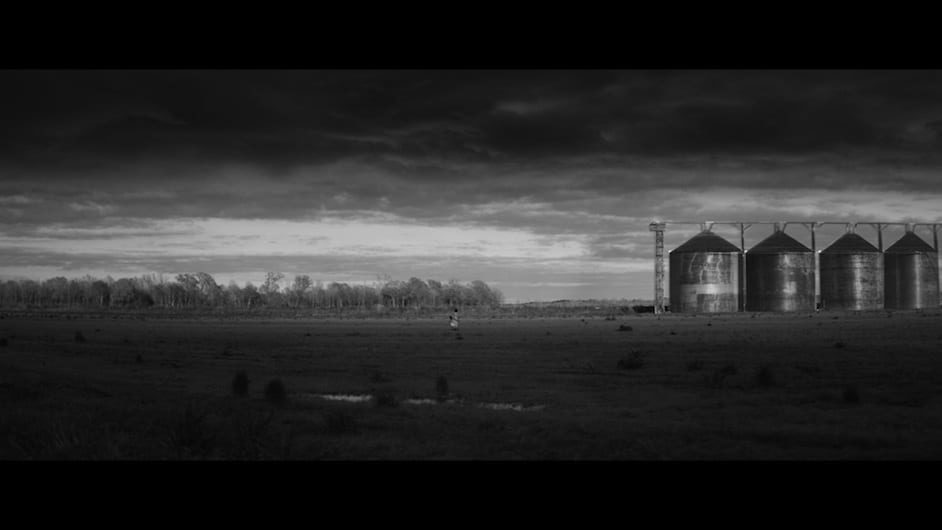It feels that you’ve encapsulated the horror and heartbreak as well as the integrity of a much bigger story in your film. Please tell us how you evolved the narrative.
My ideas for the narrative were constantly changing as the project evolved. I knew I wanted to capture a gritty and realistic portrayal of a woman carrying her murdered grandson to his final resting place, but the more time we spent scouting locations and meeting the locals, the more I became absorbed in the real story.
It’s an upsetting tale, you can still feel the sorrow where it happened. We met people who had been directly affected by the tragedy, and the emotion was still raw for so many people. When that atmosphere surrounds you, it’s impossible not to feel passionate about it.
Exploring the swampland, I imagined the physical strain as well as the emotional one. The more I immersed myself in the film, the more I thought about what Emmet’s grandmother faced, the more I was able to personally hone in on the emotion I wanted to convey. I was very conscious that I didn’t want to create something that was too melodramatic. So much of the process from treatment to final film was about finding the perfect balance in tone and sentiment.
The pacing and the black and white lend itself beautifully to the track. But it’s the way you have framed small intimate details with larger sweeps of the landscape and then tracked along the onlookers that gives the film a poetic visual language. What thoughts were driving your creative process in making the film?
Our location was amazing, but to really instill emotion and power into a film it takes more than just a great location. It was so important for me to find our characters, and capture those perfect, unscripted moments that bring a film like this to life. Together, Sy Turnball, the DOP, and I worked to give the film a fresh, unique look – really paying attention to the small, finer details. I wanted to really focus on the ways people see each other and how an unusually savage occurrence can resonate through all facets of a small community. I couldn’t have found a more perfect creative partner to realise this with than Sy.
My production company, Great Guns, and producer Jonathon Ker were, as always, instrumental in making sure that we got every little detail we could to make the film as good as it could be. Occasionally as a director you find you’re the one pushing your producer for that last shot, or that extra piece of equipment – but Jonathon was even more persistent than me!
Where did you shoot, feels like the Mississippi Delta. And was the shoot – in fact the whole production – straight forward?
We shot in Jackson, Mississippi, with a few scenes filmed in neighboring Canton. Of course, like any shoot, you’re always faced with challenges, and situations arise that can make filming tough. We had to take particular precautions when we were out in the swampland, as there were areas that were riddled with alligators, snakes, fire ants, you name it.
Luckily we had an amazing crew, many of them local to the area, who knew the risks and problems we might face, and how to go about avoiding them. Despite these factors occasionally slowing us down, it was totally worth it in the end. The visually rich location added a powerful sense of authenticity to the whole production. Even the never-ending rainfall helped.
Because the idea behind the film was such a moving, important story to tell, there was a real sense of commitment to the cause. To the point that the whole cast and crew, working like a small seamless unit, became almost oblivious to the risks surrounding them. Now, however, back in London, I am a little amazed and relieved that everyone got home in one piece! I’m really proud of the finished film and I hope that they all feel that their hard work is reflected in it.
The casting is brilliant, silent and bold. How did you go about finding your cast and working with them?
I spent a lot of time researching faces, looks, styles and types of people that I wanted to feature in the film before going out to Jackson. Ultimately it came down to a lot of open-call street-casting, and even a few moments where ‘ready-made’ scenes just appeared in front of us – for example I spotted the mechanic as we drove past the garage that we ended up using. Moments like this make the film feel truly authentic.
Our lead actress Jeanna was amazing. She was actually the mother of one of the boys that we ended up casting. She had a certain strength of character which really stood out to me – something which was so important, considering what she was about to undertake.
She mentioned that she hit the gym every morning and loved a challenge, so I knew I would feel comfortable asking her to do anything required to get the right shot. To say she was a trooper would be a total understatement… she spent 4 days soaking wet, carrying a child through snake infested swampland, and, even under these conditions, delivered an incredibly powerful, moving performance.
Is there anything else you’d like to share?
Yes, if you’d like to know more about The Emmett Till Legacy Foundation please visit: Emmett Till Legacy Foundation
Additional note: DOP Sy Turnball captures the Mississippi swampland atmosphere using a combination of Red Dragon camera and Anamorphic KOWA lenses. The black and white grade was inspired by old-fashioned wet plate photography.


















